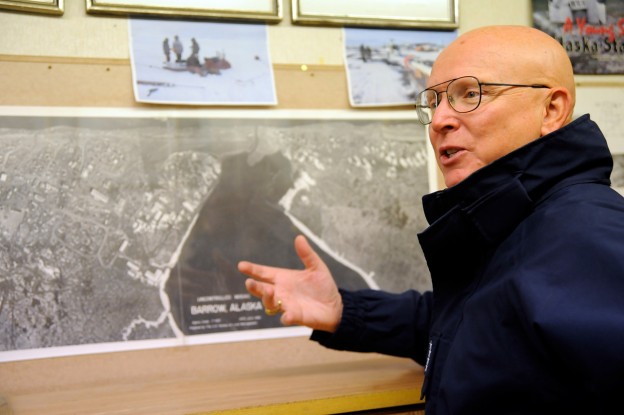
The U.S. Coast Guard has unveiled its new strategy for the Arctic outlines a ten-year roadmap for patrolling the last great maritime frontier, in a Tuesday presentation by Coast Guard Commandant Adm. Robert Papp in Washington, D.C.
“The Arctic Ocean is rapidly changing from a solid expanse of inaccessible ice fields into a growing navigable sea, attracting increased human activity and unlocking access to vast economic potential and energy resources,” Papp said in a speech in conjunction with the Center for Strategic and International Studies.
“In the past four years we’ve seen well over a 100 percent increase in traffic through the Bering Strait, and one million tons of cargo was shipped through the region last year. In addition, more than 50 percent of America’s fish stock comes from the Exclusive Economic Zone off the coast of Alaska.”
The new document follows a larger U.S. Arctic strategy released by the White House on May 10.
The plan outlines a ten-year strategy for the service places maritime domain awareness – the ability for sea units to be aware of their surroundings – on the top for the Coast Guard to address.
The Arctic remains the least charted surface seas in the world. Until 2012 National Oceanic and Atmospheric Administration ocean survey mission to the Arctic, mariners still relied on charts that were first done in 1778 by the expedition led by Capt. James Cook.
The Pentagon’s Global Positioning System is not oriented to allow for easy navigation in the Arctic and near constant cloud dilutes the effectiveness of satellite observation.
Papp called for expanding awareness through information sharing with those who operate in the region in addition to other U.S. agencies, like NOAA, that have stakes in the North.
The plan also called for a modern set of laws to govern the region. Eight nations have claims to Arctic territories (U.S., Canada, Sweden, Norway, Denmark, Iceland, Russia and Finland). Twelve more countries with interest in the region have been added to the Arctic Council as observers (Italy, China, India, Singapore, South Korea, Netherlands, Poland, Spain, France, Germany, Japan and the U.K.).
All, aside from the U.S., are signatories to the United Nations Law of the Sea Convention.
“In order to exercise leadership, improve our ability to influence outcomes, and effectively interact with other Arctic Nations, we urgently need the Senate to approve U.S. accession to the treaty,” Papp said.
He made the case that not being party to the treaty puts U.S. interests at risk by being unable to make mineral claims for resources in the Arctic.
“While the United States stands by, other nations are moving ahead in perfecting rights over resources on an extended continental shelf,” Papp said.
“They are making their case publicly in the media, and in construction of vessels to patrol these waters. Even China, which has no land mass connectivity with the Arctic Ocean, has raised interest by conducting research in the region.”
The strategy also calls for extending partnerships across all levels of U.S. government and expanding international cooperation.
Moving forward, Coast Guard will have to carefully monitor its resources to provide a presence in the Arctic. Papp said the Pentagon is aware of the Arctic challenges but the Coast Guard will be the service to carry the bulk of the load in the region.
U.S. Navy submarine forces routinely operate in the region but since the end of the Cold War, Pentagon attention to the Arctic has waned.
Armed with a yearly budget of only $8 billion, compared to the U.S. Navy’s $155.8 billion Fiscal Year 2014 request, the Coast Guard will have to sacrifice other mission areas to tend to the Arctic, Papp said.
In the next ten years the service plans an annual patrol from the Coast Guard’s new National Security Cutters during the ice-free season and plans to build a new heavy icebreaker to serve the area.
Additional resources, like unmanned aerial vehicles and permanent stations in Alaska, will likely be far in the future, Papp said.





